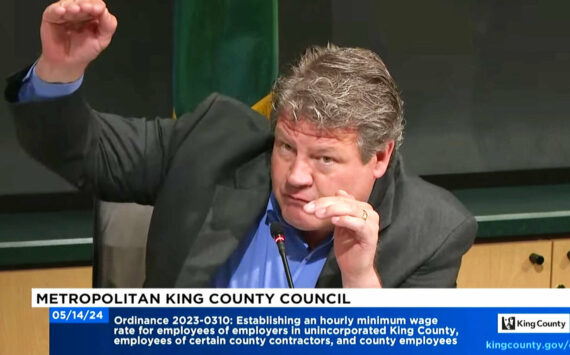LOVE HIM or hate him, Mark Sidran is believed to be a man of action. And yet, if Sidran has an activist agenda for what he would do as mayor, it hasn’t come out. Sidran has focused much of his campaign on opposing light rail, which, while opponent Greg Nickels’ pet project, is a regional one over which the mayor has little say.
But Sidran has given some indication of what he might do about homelessness, which is also the arena from which much of his opposition has come. Time and again, Sidran has said that he would “refocus the entire city program away from a shelter strategy to a treatment strategy.”
Sidran argues that you can’t “shelter your way” out of homelessness without addressing what he feels are the major underlying issues of mental health and substance abuse. He believes that homeless advocates, in pressing simply for more shelter beds and affordable housing, have allowed ideology to blind them. “When I talk to my housing advocate friends, they will get to the issues of chemical dependency and mental illness as a footnote. But mostly they want to talk about their views [on the] cost of housing and gentrification. I see the argument in reverse terms. I see economics as an issue, but in my view, it’s secondary to the public-health issues.”
Sidran maintains that the failure of the shelter-based approach is evident because the number of local homeless has not decreased one bit despite a dramatic increase in city shelter spending over the last 10 years.
Whether Sidran’s right or wrong about which root causes are most important, everybody agrees that there’s a desperate need for more treatment. In King County last year, only one in five low-income people who needed drug and alcohol treatment was able to get it. Even so, those familiar with homeless services question what a Mayor Sidran could do about it. They point out that counties—not cities—have historically taken responsibility for such treatment, using a large pool of funds that the state gives them every year as required by law. Next year, King County will receive $100 million for mental-health treatment and $20 million for substance-abuse treatment of the poor.
“I think Mark needs to be more honest about that,” says Bill Hobson, executive director of the Downtown Emergency Service Center (DESC), the biggest provider in town of services for mentally ill and chemically addicted homeless people.
Sidran is disappointingly short on details when asked about this conundrum. But for a guy who takes pride in shaking up the status quo, it should be easy for him to ask the question: Just because the city doesn’t fund treatment now, does that mean it can’t? And the answer he’d get is no. “In these times of budget cuts, anyone that can provide support for anything is helping,” says Jackie MacLean, manager of the county department that dispenses mental health and chemical dependency treatment.
Indeed, the county stands to lose $40 million in state funds over the next six years for mental-health treatment and is cutting its own human- services budget as well.
Of course, given the economic climate, the city has its own belt tightening to do. So a much bigger question for Sidran’s plan to expand treatment is: Where is the money going to come from? In a recent debate on KCTS, Sidran seemed to answer that question. “I’m a big believer in seeing what works and what doesn’t work and then shifting resources around,” he said. The clear implication is that he’d take the money out of shelter programs and put it into treatment.
And that’s where the fights are going to be should a Sidran mayoralty come to pass. Apart from anything else, homeless advocates and service providers argue that a reduction in shelter beds would be counterproductive for treatment. “Any clinician knows that the most vital ingredient to stabilize someone clinically is a safe place to stay,” says DESC’s Hobson.
When interviewed, Sidran sidesteps the controversy. “I don’t think it’s a matter of reducing [shelter beds],” he says. “It’s a matter of getting value for the money.” He contends that the shelter system is rife with drug dealing and menacing behavior.
It’s hard to see, though, how raising shelter standards is going to save any money that could then be used for treatment. If anything, prompting new security measures would seem to add to shelter costs.
If Sidran really is a doer, though, you have to believe he would somehow lead the city into a larger treatment role, even if it means cutting shelter beds or other services. And that’s an action plan that would likely be debated over the next decade.








